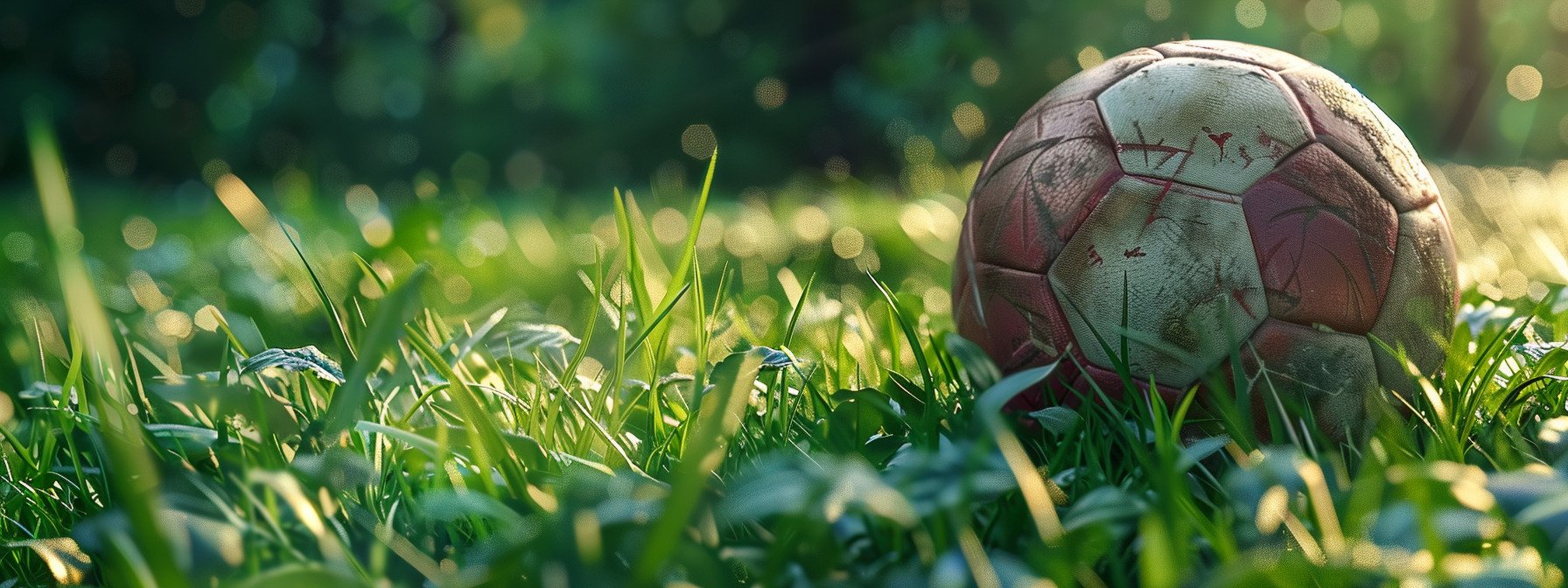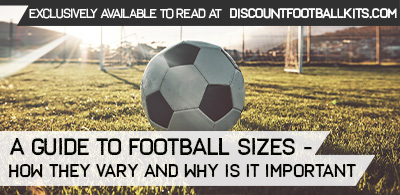Whether you’re enjoying a simple kickabout in your garden or an experienced Premier League footballer, it’s crucial that you play with the right size balls that also have the correct air pressurisation.
This can help to optimise the experience of playing football at all levels, while ensuring that the ball responds suitably when it’s struck, passed or delivered from a set piece.
In this comprehensive guide, we’re going to take a much closer look at the various sizes of footballs, while asking how they’re deployed and how the size of a ball impacts the overall gameplay experience.

Getting Started – What are the Different Football Sizes?
Simply put, there are five different sizes of football, each of which has a different (and variable) circumference. These balls are subsequently used by different age ranges and at alternative levels of competition, although older players may occasionally train with smaller balls when completing specific drills. Here’s a glimpse at the five football sizes and their dimensions, alongside a closer exploration of each one and its most common applications.
| Football | Circumference | Age Group |
|———-|—————|———–|
| 1 (Mini) | 18 to 20 inches | Any |
| 2 | 20 to 22 inches | 3-5 (U4) |
| 3 | 23 to 24 inches | 5-8 (U5-U8) |
| 4 | 25 to 26 inches | 8-11 (U8-U12) |
| 5 | 27 to 28 inches | 12+ (U12-U18 and Pro) |
Football Size #1 (18 to 20-inch Circumference)
Also referred to as a ‘toy’ or ‘mini’ football, this is most commonly sold as a collectible or souvenir item in stores and gift shops around the world.
Interestingly, they’re often branded and display a particular club logo too, meaning that you may also find size 1 footballs sold as official club merchandise.
In addition to being sold as collectibles to young fans, size one footballs are used to introduce young kids to the game of football and further their interest in the sport. Because of this, you’ll often find size one footballs are soft and designed for indoor use, although they can also be manufactured using more traditional materials.
However, players of any age and ability can use size one footballs as part of their training, especially when learning key technical skills such as ball control and dribbling.
Football Size #2 (20 to 22-inch Circumference)
Size 2 footballs are also commonly used during training by older players, especially those who want to learn and master the sport’s key technical skills.
This applies to both goalkeepers and outfield players, who can practice their ball handling and dribbling skills with a size 2 ball as they look to develop their technical ability.
Size 2 footballs may be used primarily by children aged between three and five and at U4 level, during which time coaches focus almost exclusively on ensuring that players develop a feel for the ball and the most fundamental skills.
Football Size #3 (23 to 24-inch Circumference)
Size 3 football boast a circumference of between 23 and 24 inches and a corresponding weight of between 300 and 320 grams, while this type of ball is primarily deployed at under 8 level.
This means that it’s typically the first ball used in competitive matches at junior level, which largely feature U5 teams through U8.
This ball boasts the perfect dimensions for competitive gameplay at this level, as it’s ideal for improving ball handling while simultaneously aiding dribbling and passing. Interestingly, it’s at this level where the ball’s weight is measured prior to gameplay, while it affords players the chance to hone their skills with an authentically sized football.
Football Size #4 (25 to 26-inch Circumference)
Size 4 may also be described as a ‘medium’ football, and one that has been designed for use in competitive youth matches.
As a result, this 25-26 circumference ball (with a respective weight of between 350 and 390 grams) is used throughout U8-U12 levels.
It’s also thought to provide an effective transition from junior levels to using a full-size football, and while players may initially struggle with the additional circumference and weight, it represents a crucial stage in the development of their skills once they’ve become accustomed to the new dimensions.
Football Size #5 (25 to 26-inch Circumference)
Last, but certainly not least, we come to the size 5 football. This the most common and well-known size, with the ball widely used in competitive professional football and all youth gameplay over the age of 12.
Measuring 27-28 inches in circumference and weighing between 410 and 450 grams, the size 5 football sets the standard in professional matches, including stellar tournaments such as the English Premier League and the UEFA Champions League.
Its increased size and weight also means that the ball is not suitable for those aged under 12, as it’s far too heavy and difficult to manoeuvre. This is also why the size of ball used is scaled according to the level at which you play, as you gradually get used to playing with larger balls and develop your skills holistically over time.

What About Air Pressure?
Understandably, the size of football also dictates the requisite level of air pressurisation. Fortunately, FIFA has provided a comprehensive guide in this respect, which recommends the optimal level of air pressure for each individual ball size.
| Ball Size | PSI (Air Pressure Recommendation) |
|———–|———————————-|
| 1 | 4 psi |
| 2 | 7 psi |
| 3 | 8.7 psi |
| 4 | 8.7 psi |
| 5 | 8.7 psi |
But why exactly are the ball’s weight, size and recommended air pressure so important? Well, there are significant physical differences between infants who are just beginning to play the game and strapping teenagers, while the level of skill and understanding also varies wildly between these demographics.
So, if a player aged five tried to use a size four or five ball, they’d struggle to manoeuvre it with any kind of accuracy, making it incredibly difficult for them to learn skills and develop their game. As a result, they may start to cultivate bad habits, or become frustrated with the sport and take up something else instead.
Instead, it’s far better to use smaller balls that increase incrementally in size as players age and progress through their various levels, while also retaining the deployment of size two and size three balls for the purpose of technical training drills.
Ultimately, it’s crucial that coaches understand these guidelines and make the right choice of ball for their age group, as this helps to optimise their development over time and makes it much easier to successfully impart core skills like dribbling, handling, passing and shooting.










